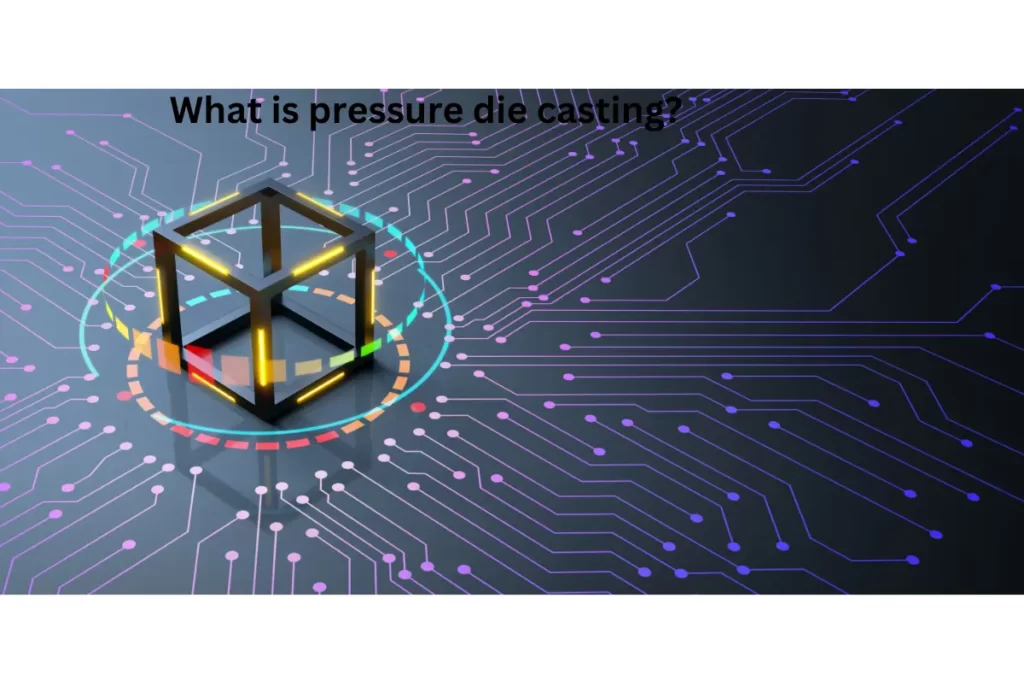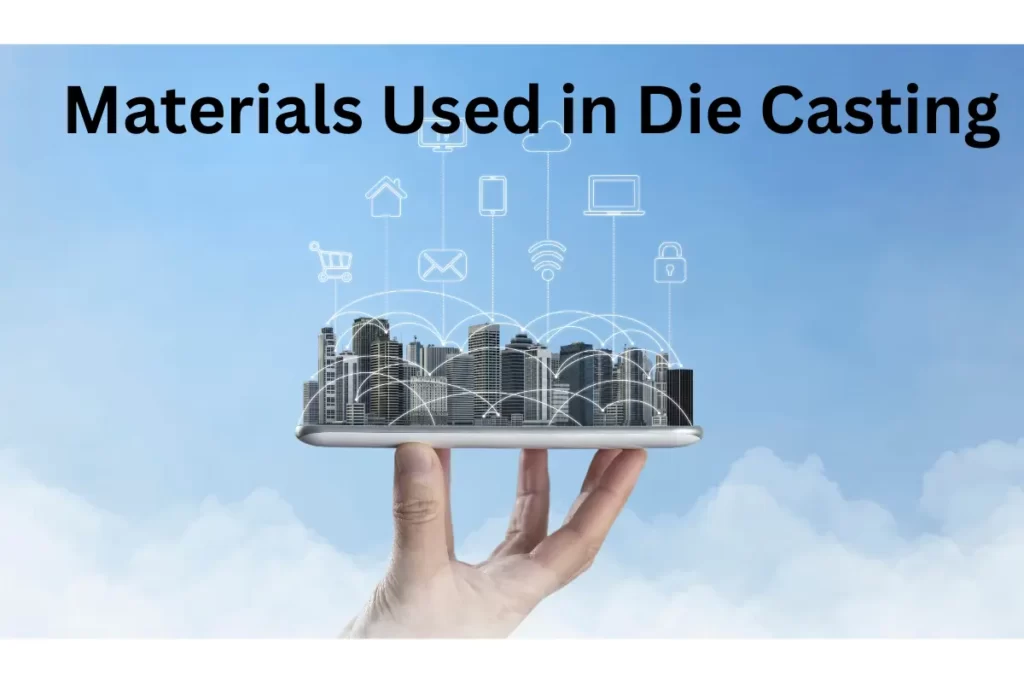Aluminum Pressure Die Casting Manufacturing China
Low pressure die casting and high pressure die casting are two methods of making casting molds. This method is commonly used to create a wide range of products.
The choice of metal directly affects the overall quality, durability, and aesthetic appeal of the finished product.
What is Pressure Die Casting?

Pressure die casting is a fast, reliable, and cheap manufacturing process for the production of massive volumes of net-shaped, precisely specified metal components. Pressure die casting involves pumping a molten metal alloy into a steel mold at high pressure. This quickly solidifies to create a component with the shape of a net. After that, it is automatically extracted.
There are two types of pressure die casting, High-Pressure Die Casting and Low Pressure Die Casting. High-pressure die-casting has a wider range of applications and is used in around 50% of the casting production while low-pressure die casting currently accounts for 20% of total production.
What is High-Pressure Die-Casting?
In this case, the liquid metal is poured into the metal mold at a high rate of speed and pressure. Two vertical plates make up the essential apparatus. These plates support the bolsters, which hold the die halves. One of the two plates is fixed, while the other is mobile.
Steps of High-Pressure Die Casting
The four phases below make up the majority of high-pressure die-casting processes.
Preparing the Mold
Mold preparation is the first step in high-pressure die casting. In the first phase, the manufacturing company coats the internal walls of the mold with a lubricant. This is essential to regulate the mold’s temperature and creates a layer between the molten metal and the mould.
Injection
The manufacturing company prepares the die mold before injecting molten metal into it. This stage involves completely closing and sealing the mold. It won’t be able to “accept” the extremely pressurized molten metal otherwise.
Cavity Ejection
The manufacturing company then removes the freshly created cavity from the mold. Ejector pins are often built into the mold itself, and when they engage, they release the cavity. Of course, for it to evacuate, the cavity must be solid. The manufacturing company needs to wait for the raw metal to cool if it is still liquid before it can remove the hollow from the mold.
Ejection of the Casting
Shakeout is the fourth and last phase in the high-pressure die-casting process. The manufacturing company removes any junk metal from the just-formed cavity at this stage. High-pressure die casting often produces extra scrap metal. Therefore, before the mold can be used again, the scrap metal needs to be removed.
Advantages and Disadvantages of High-Pressure Die-Casting
| Advantages | Disadvantages |
| Quick casting cycles | high operational and investment costs |
| Perfect for thin-walled parts | Complex and costly dies |
| Smooth and shiny surfaces | Sand cores can’t be used, hence only for die-cast components without undercuts. |
| Suitable for automation | Less robust values |
| Die-cast weight is limited by the machine’s locking force. |
High-Pressure vs. Low-Pressure Die Casting
It is important to consider the various capabilities and limitations of high-pressure and low-pressure die-casting methods.
- Low-pressure die casting can produce parts weighing up to 150 kg. It largely uses alloys with low melting points.
- Components created using high-pressure techniques are created more quickly than those created using low-pressure die-casting. The size of castings will also be constrained by machine size.
- In contrast, high-pressure die casting is most frequently used for soft alloys like zinc and aluminum.
- Better surfaces for finishing options will also be provided by high-pressure casting. Surface finishes are affected by the die’s finish quality.
- However, one disadvantage is that there are substantial operating and investment expenditures. Additionally, keep in mind that casting size will be constrained by machine size.
- Casting thick parts under high pressure might be challenging.
- High-pressure die-castings may also exhibit porosity, though there are ways to address this by collaborating with your supplier.
Die Casting for the Automotive Industry
The automotive industry is not left behind by the everyday changes in technology. Manufacturers and project supervisors are constantly searching for faster, more dependable, and less expensive ways to make car parts in the current market. Hence the developments in automotive die-casting technology.
The automotive industry values die casting for a number of reasons. This process is a useful substitute for metal fabrication to lighten car parts and increase mileage without sacrificing quality. Making parts with stronger walls, less weight, and more durability is beneficial.
Major Automotive Parts
Casting is a standard method used to make many different parts of an automobile, including
- Pistons,
- Engine blocks,
- Valve covers,
- Wheels,
- Gearbox housing,
- Carburetors,
- Fan clutches, etc.
Aluminum alloys, magnesium alloys, and titanium casts have expanded as a result of their improved corrosion resistance and the ongoing need to make automotive components lighter and stronger.
Materials Used in Die Casting

Malleable and non-ferrous metals such as aluminum, magnesium, and zinc, are commonly used to make die-cast components.
| Aluminum Alloys | Good mechanical qualities Good corrosion resistance Greater surface finishes Excellent electrical and thermal conductivity |
| Magnesium | Excellent rigidity Suitable for electrical housings and connectors A good strength-to-weight ratio |
| Zinc Alloy | High ductility Easiest to cast Excellent mechanical and physical qualities |
What is the Importance of Quality Control in Die Casting?
Regarding die-casting processes, quality control is essential. Since it helps guarantee that products are free of flaws and fulfill the appropriate requirements, testing and quality control are necessary. The quality of die castings can be evaluated using a variety of tests and processes. These consist of dimensional checks, porosity testing, and X-ray inspection.
X-ray Inspection
The primary method for identifying porosity in a material is X-ray. It is efficient in determining the overall amount of porosity in the cast material. Destructive machining is a useful method for evaluating porosity levels.
It also often provides inaccurate estimates and has a host of other issues, chief among them the expensive cost. The best way to reduce porosity in the die-casting process is, above all, prevention.
Porosity
Small air pockets that could form during the casting process are known as porosity. Although there is a certain amount of acceptable porosity, anything above that can compromise the integrity of the part and the entire product to which it is intended to be connected.
Die castings must be tightly sealed and well below the acceptable amount of porosity, which has always been a challenge for standard die casters.
Dimensional Checks
It is best to use in-line or off-line gauging to find any dimensional issues. The importance of the issues and the process’s stability are used to determine how often the material will be inspected.
As faults in the tooling process are the main causes of dimensional problems in die casting, techniques like the poke yoke are also effective in preventing any problems with dimensions.
Is Die environmentally friendly?
Die casting is one of the most cost-effective and environmentally friendly production technologies currently available. In fact, all materials used in die casting are 99 percent recyclable. Die casting effectively complies with the “reduce, reuse, and recycle” philosophy.
Reduce
Die casting allows for the mass manufacture of metal components using a mold that may be reused hundreds of times. Without using energy to make modifications, it can produce large quantities of complicated, identical pieces.
This, along with the fact that less waste is created compared to other procedures of a similar kind, serves to lessen the impact on the environment.
Re-use
The ‘ re-use’ component of the 3R concept is addressed by die casting in a number of different ways. First, by providing finished goods that, when no longer needed, can be completely recycled by the end user, die-casting creates extremely little scrap metal, which reduces waste even further. However, it’s important to note that any leftover material can be recycled and used again.
Recycle
Die casting is an environmentally friendly method of production since almost all of the materials used in it can be recycled.
Magnesium and zinc are both recyclable. However, aluminum die-casting is one of the most common diecasting method, as it is particularly recognized for being simple to recycle, affordable, and energy-efficient.
Conclusion
Aluminum die casting is an effective, economical, and extremely precise casting method for mass manufacturing complicated parts. The intended design criteria determine the material choice and casting technique. To achieve the best results, one must take all factors into account and plan wisely.








